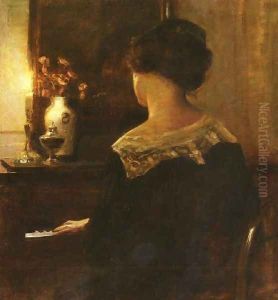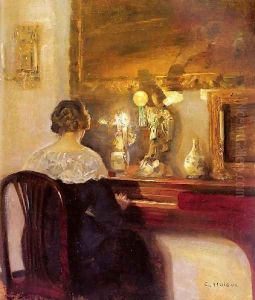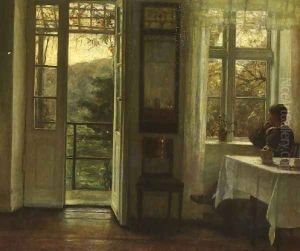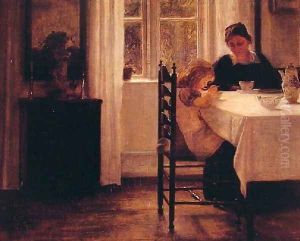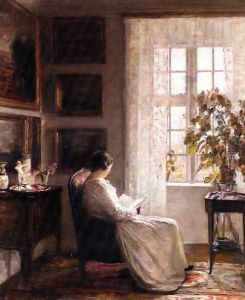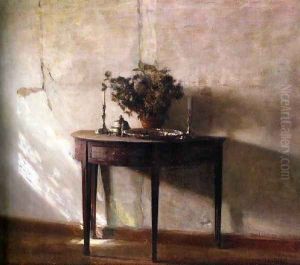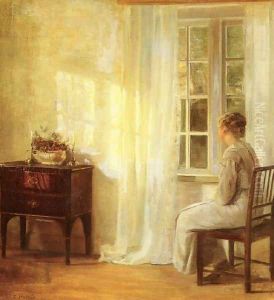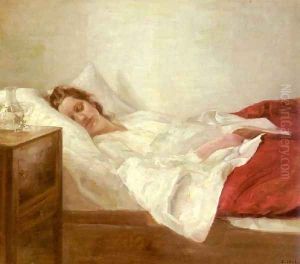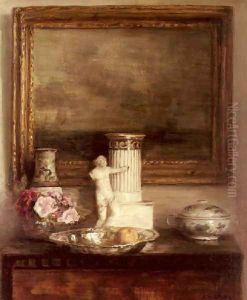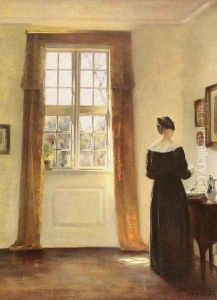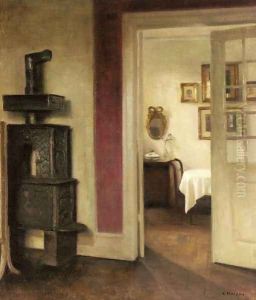Carl Wilhelm Holsoe Paintings
Carl Wilhelm Holsøe was a Danish artist, born in 1863 in Aarhus, Denmark. He is best known for his interior scenes, which are often compared to the works of Vermeer due to their tranquil atmosphere and meticulous attention to light and detail. Holsøe was part of a group of Danish artists known as the 'Danish Interior Painters,' which also included Vilhelm Hammershøi, his brother-in-law, and Peter Ilsted. These artists shared a fascination with the play of light in interiors, a theme that dominated their work and contributed significantly to the aesthetic of Danish painting in the late 19th and early 20th centuries.
Holsøe studied at the Royal Danish Academy of Fine Arts in Copenhagen, where he developed his distinctive style. His paintings often depict serene domestic scenes, featuring figures in contemplative states, bathed in the natural light that filters through windows. These works are celebrated for their serene beauty and their ability to evoke a sense of peaceful isolation. Holsøe's mastery in rendering textures and surfaces, from the sheen of metal objects to the transparency of glass and the softness of fabrics, demonstrates his acute observational skills and technical prowess.
Beyond interiors, Holsøe also painted still lifes and landscapes, although these are less well-known. His work was widely appreciated during his lifetime, and he exhibited throughout Europe, achieving considerable success and recognition. Today, his paintings can be found in museums and private collections around the world, testament to his enduring appeal.
Carl Wilhelm Holsøe passed away in 1935, leaving behind a body of work that continues to be admired for its quiet beauty and technical excellence. His contributions to Danish art and the genre of interior painting remain significant, and his works continue to attract the attention of art enthusiasts and collectors.
